Religion: Bible
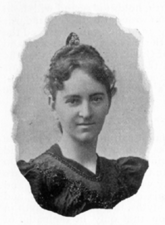
Katherine M. Cohen
Katherine M. Cohen was a sculptor and artist dedicated to advocating for equality for women in the arts. Comfortably situated in the community of Philadelphia’s Jewish elite, Cohen created many commissions for the community reflecting Jewish themes and illustrated a Jewish children’s book. Cohen made a speech at the Chicago World’s Fair advocating for the support of artists, and specifically female artists.

Yardena Cohen
Incorporating biblical themes and Sephardic music into her dances, Yardena Cohen helped create a uniquely Israeli artistic culture. Cohen opened her Haifa dance studio in 1933 and maintained it for some seventy years, stressing creative dance. She continued to teach well into her nineties and in 2010 was awarded the Israel Prize for Lifetime Achievement.
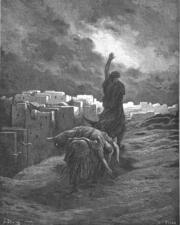
Concubine of a Levite: Bible

Concubine of a Levite: Midrash and Aggadah
The story of the concubine at Gibeah, who is murdered when her husband sends her out to a crowd of Benjamites, is one of the most shocking narratives in the Bible. The rabbis do not blame the unnamed woman for her fate and the ensuing crisis, instead placing the blame at the feet of the Levite and the leaders of Israel.
Creation According to Eve: Beyond Genesis 3
No feminist critic of the Bible has neglected to discuss the story or stories of the creation of woman; yet, despite significant differences in theoretical approach and focus, their readings generally have been confined to Genesis 1–3. Beyond Genesis 3, the matter of creation and femininity is addressed, offering new and complex insights.

Daughter of Jephthah: Bible
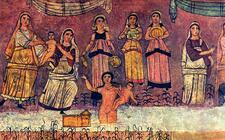
Daughter of Pharaoh: Midrash and Aggadah
The rabbis depict the daughter of Pharaoh, who rescued the baby Moses, as a righteous figure who did not follow her father’s wicked ways but rather converted and ceased worshiping idols. She was highly praised by the Rabbis, and the midrash includes her among the devout women converts and those who entered the Garden of Eden while still alive.
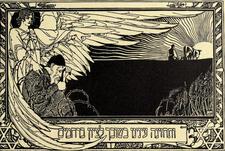
Daughter Zion (Bat Tzion)
“Daughter Zion” or “Fair Zion” (in Hebrew bat tzion) is the personification of Jerusalem in poetic and prophetic literature. Initially, the city is positively likened to a daughter, protected under God’s special regard, but later, under the Babylonian siege, she is devastated, even ravaged. However, when Jerusalem is rebuilt, the daughter is forsaken no longer, returning to God’s grace in the prophecies of consolation.
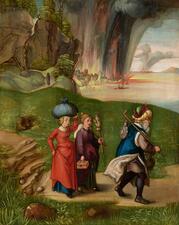
Daughters of Lot: Bible
When the men of Sodom demand sexual relations with two messengers from God, Lot offers his daughters instead. The daughters, however, escape with Lot and live in a cave after Sodom is destroyed. There they have relations with their father and give birth to his sons.
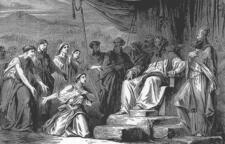
Daughters of Zelophehad: Bible
The story of the five daughters of Zelophehad provides legitimation of a limited right of Israelite women to inherit land. The story celebrates women’s boldness and at the same time offers comfort for men who have the misfortune (from the Bible’s androcentric point of view) to have no sons.
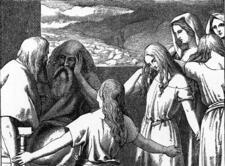
Daughters of Zelophehad: Midrash and Aggadah
The midrash rains many praises on the daughters of Zelophehad, describing them all as equally wise and virtuous, as well as exegetes. The midrash also says that they are mentioned by the Patriarchs and are so righteous that they are blessed with children despite their old age.
Deborah 1: Midrash and Aggadah
Rebekah’s nurse Deborah died when Jacob was on his way to the Land of Canaan, close to Bethel, where she was buried under a tree. The rabbis describe her as having a close relationship to Jacob.

Deborah 2: Midrash and Aggadah
Deborah, one of the most extraordinary women in the Bible, is presented as an extremely righteous and praiseworthy woman in rabbinic literature. Though some traditions criticize her pride, perhaps wary of how she transgressed gender norms, most of the rabbinic texts about Deborah are filled with praise.

Deborah: Bible
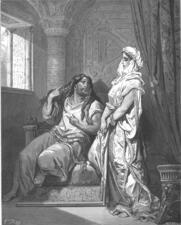
Delilah: Bible

Delilah: Midrash and Aggadah
The midrashim on Delilah attest to the negative attitude of the Rabbis toward non-Jewish women. The Rabbis accentuated the negative aspects of the relations between Samson and Delilah in order to demonstrate the havoc that a foreign woman could wreak.
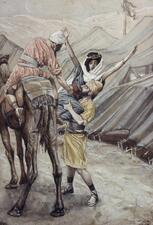
Dinah: Bible

Dinah: Midrash and Aggadah
Dinah was the only daughter of Jacob and Leah, and the Rabbis present her as possessing many positive qualities, as was fitting for the daughter of the progenitors of the Israelite nation. The rabbis also offer many different explanations for the rape of Dinah, trying to understand the troubling story.
Divorce: The Halakhic Perspective
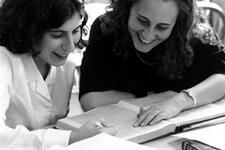
Drisha Institute for Jewish Education
Drisha was founded in 1979 to provide women with the opportunity to study Talmud and other Jewish texts. It has since expanded to serve students of all genders. Drisha is officially nondenominational but has served as a cornerstone of the Orthodox feminist movement. It has been joined by a number of liberal observant New York institutions that promote intense engagement with Jewish text and observance for women and men.
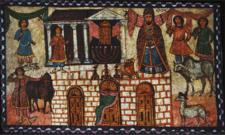
Elisheba, daughter of Amminadab: Midrash and Aggadah
Elisheba is mentioned only a single time in the Torah she-bi-khetav: Lit. "the written Torah." The Bible; the Pentateuch; Tanakh (the Pentateuch, Prophets and Hagiographia)Torah (Ex. 6:23), as the daughter of Amminadab, the sister of Nahshon and the wife of Aaron the High Priest. The Rabbis speak at large concerning her. They note her importance, since her life was bound up with the most distinguished families in Israel: her husband was appointed High Priest, her children were deputy high priests, her brother was nasi (chieftain) of the tribe of Judah and her brother-in-law Moses led the Israelites. The A type of non-halakhic literary activitiy of the Rabbis for interpreting non-legal material according to special principles of interpretation (hermeneutical rules).midrash accordingly applies to Elisheba the verse “And may your house be like the house of Perez whom Tamar bore to Judah” (Ruth 4:12), which was meant to signify that Elisheba, too, was descended from the royal line since she was from the tribe of Judah (Ruth Zuta 4:12). Commenting on Jacob’s blessing to Judah, “You, O Judah, your brothers shall praise” (Gen. 49:8), the Rabbis list Elisheba daughter of Amminadab among the important people and officials that were born to this tribe and call her “the mother of the priesthood” (Gen. Rabbah 97:8).
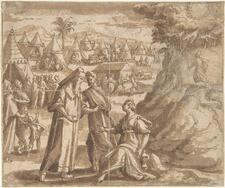
Elisheba: Bible
Elisheba was the wife of the high priest Aaron and the mother of their four sons, but she does not appear in any stories. Mention of her in the genealogy signifies the importance of women in the destiny of their children.
Esau, Wives of: Midrash and Aggadah
Esau’s three wives are given more context and background by the rabbis than in the Torah. Esau’s first two wives, Adah and Judith, are described as adulterous and idolatrous, while his third wife, Mahalat, is interpreted as either Esau’s repentance or his fall further into evil.
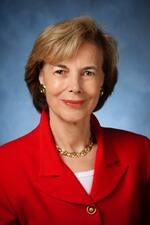
Tamara Cohn Eskenazi
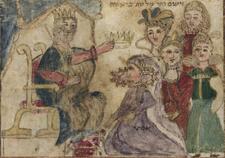
Esther: Apocrypha
The Greek Additions to the Hebrew Bible’s Book of Esther were probably written over several centuries and contradict several of the details from the Hebrew text. Generally, the Additions are more dramatic and ultimately portray Esther as stereotypically weak and helpless, even though parts of her weakness and femininity ultimately help save her people.


